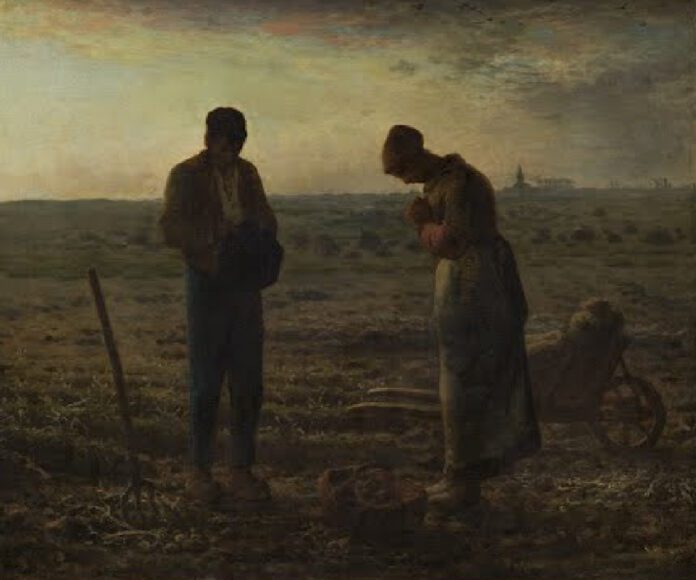
An invitation to the Liturgy of the Hours
One of my favorite paintings is Jean Francois Millet’s “The Angelus.” A farming couple pause their work in the fields and bow their heads, briefly stepping away from their present task to call to mind the moment of Christ’s Incarnation.
An Angelus at twelve or six o’clock only takes one minute. A “Jesus I trust in you” at three o’clock takes but a breath.
These little moments, however short, help to consecrate our busy lives as students and laypersons. They remind us that the work we do is not for ourselves but for the glory of our Father.
In this new Lenten season, the Church invites each of her members to experience the Lord’s words in Hosea 2:16: “I will allure her now; I will lead her into the wilderness and speak persuasively to her.”
In Lent, Christ invites each beloved soul to enter the desert with Him, to give Him permission to burn all of our idols, so that He can offer us His heart on the cross and make new the stony hearts within ourselves. The desert is not just an experience we have on a retreat. Rather, it is a place we can enter every day in prayer.
The Church helps us to respond to the Bridegroom of Hosea by creating little daily deserts through the Liturgy of the Hours. The Liturgy of the Hours, or the Divine Office, is a series of seven periods of prayer in which the entire Church joins together in reciting the Psalms, hearing Scripture and interceding for the needs of the world.
When I fell in love with our Lord as a 14-year-old, it was largely thanks to my discovery of the Church’s liturgical life. The daily Mass readings and the Liturgy of the Hours promised me that I was never alone, that Christ’s entire mystical Body joined their prayers to mine and surrounded me with unfathomable love.
Because priests, consecrated religious and deacons make a vow to pray the Liturgy of the Hours, there is a guarantee that millions of Catholics around the world join you in prayer whenever you pray the Divine Office. It is a set series of prayers, and therefore everyone who prays the Liturgy of the Hours offers the exact same prayers at the same time of day.
When you pray Evening Prayer, you pray the same words that Pope Francis prays. You join your prayer with nuns in Argentina, friars in New York and a married couple in Africa. Their heart cry is yours; your tears become theirs.
The Liturgy of the Hours provides a beautiful opportunity for communal prayer. Through reciting the Psalms aloud and in unison with other voices, the joy, desire and heartbreak expressed in the Psalms offer a voice to our own emotions and prayers. Through the medium of the Church’s liturgy, we join our own hearts with the hearts of those around us, responding to Christ’s desire in John 17:21 that we “may all be one, as you, Father, are in me and I in you.”
To pray the Divine Office doesn’t mean that you have to pray all seven hours – only cloistered religious do that! Also, the word “Hours” may be misleading: Night prayer takes a maximum of ten minutes. The longest prayer, the Office of the Readings, can take no more than twenty minutes. The prayers for the Divine Office are available online, on the free iBreviary app or in the “Shorter Christian Prayer” books in your dorm.
This Lent, I invite you to introduce the Liturgy of the Hours into your daily prayer life. Give our Lord permission to love you through the riches of our Church’s liturgy. Let Him hear your voice in the desert.